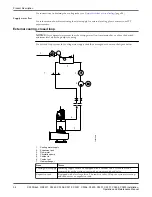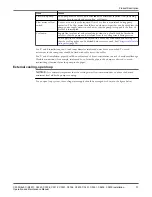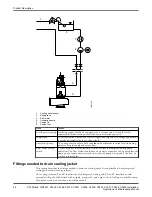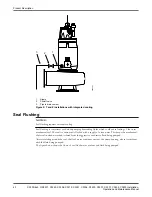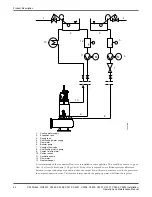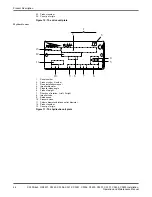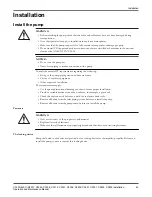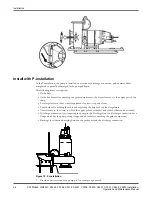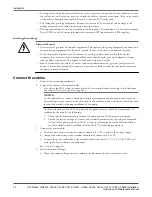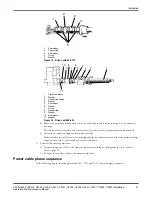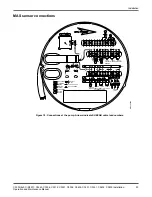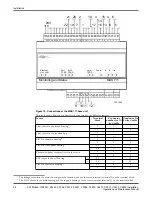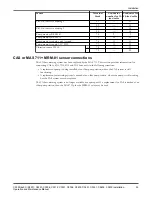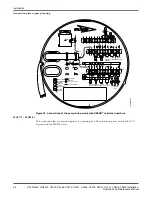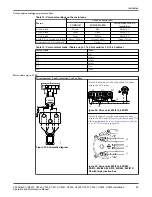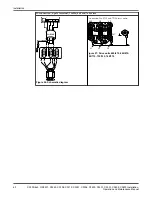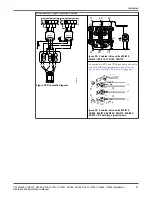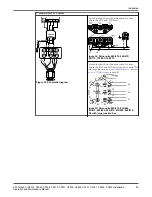
Make the electrical connections
General precautions
Electrical Hazard:
• A certified electrician must supervise all electrical work. Comply with all local codes and regulations.
• Before starting work on the pump, make sure that the pump and the control panel are isolated from
the power supply and cannot be energized. This applies to the control circuit as well.
• Leakage into the electrical parts can cause damaged equipment or a blown fuse. Keep the end of the
motor cable above the liquid level.
• Make sure that all unused conductors are insulated.
• There is a risk of electrical shock or explosion if the electrical connections are not correctly carried
out or if there is fault or damage on the product.
CAUTION:
If the pump is equipped with automatic level control and/or internal contactor, there is a risk of sudden
restart.
Requirements
These general requirements apply for electrical installation:
• The supply authority must be notified before installing the pump if it will be connected to the public
mains. When the pump is connected to the public power supply, it may cause flickering of
incandescent lamps when started.
• The mains voltage and frequency must agree with the specifications on the data plate. If the pump can
be connected to different voltages, the connected voltage is specified by a yellow sticker close to the
cable entry.
• The fuses and circuit breakers must have the proper rating, and the pump overload protection (motor
protection breaker) must be connected and set to the rated current according to the data plate and if
applicable the cable chart. The starting current in direct-on-line starting can be up to six times higher
than the rated current.
• The fuse rating and the cables must be in accordance with the local rules and regulations.
• If intermittent operation is prescribed, the pump must be provided with monitoring equipment
supporting such operation.
• The thermal contacts must be connected to a protection circuit in accordance with the product
approvals.
• The thermal contacts/thermistors must be in use.
• For FM-approved pumps, FLS must be connected and in use in order to meet approval requirements.
• The environment must be appropriate for medium-voltage (1.2–10 kV) cables and electrical work.
Cables
These are the requirements to follow when you install cables:
• The cables must be in good condition, not have any sharp bends, and not be pinched.
• The sheathing must not be damaged and must not have indentations or be embossed (with markings,
etc.) at the cable entry.
• The cable entry seal sleeve and washers must conform to the outside diameter of the cable. For more
information, see
(page 58).
• The correct entrance flange must be used with the existing cable according to the table in
(page 58).
• The minimum bending radius must not be below the accepted value.
Installation
C3300/6x5, C/R3231, C3240, C3306, C3312, C3351, C3356, C3400, C3501, C3531, C3602, C3800 Installation,
Operation and Maintenance Manual
49


